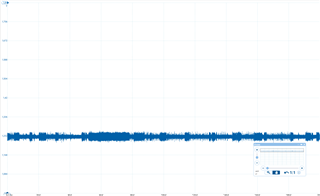Other Parts Discussed in Thread: MCT8316Z,
I have a problem with the MCT8316Z EVM. The board is in the standard configuration, so the hardware version is equipped with the standard resistors.
About the motor: the BLDC motor is equipped with digital hall sensors, so the signals are connected to HPA, HPB and HPC. The pull-up jumpers are active.
The problem is that as soon as the potentiometer is turned counterclockwise, a PWM signal is generated, the motor clicks and the current consumption increases, but it does not start to rotate. At the same time, the nFault LED flashes. If you rotate the motor mechanically, the MCT is able to drive the motor and set the speed through the potentiometer.
I would exclude the motor from the problem, as I have exchanged it with other BLDC motors and they all show the same behavior.
What is my problem and how can I solve it?
Thank you!




